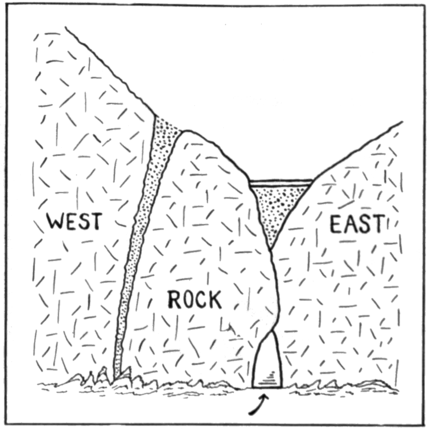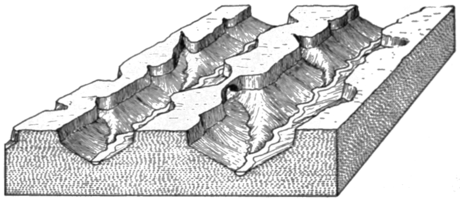at one time the stream flowed over a fall which is now represented by the top of the bridge; in the course of time the freezing of the water between the thin vertical plates of which the slabs are composed at the foot of the fall forced them apart, making it easy for the water from the fall to wear away the rock at its foot and to excavate a cave. This cavity was gradually extended up stream until a porous layer was encountered through which the water of the stream poured into the cavity, thus forming a bridge of the first of the two slabs. The same process was continued with the undercutting of the second slab. In this way a natural bridge was formed. It is hardly probable that another structure made in the same way is in existence.
It does not seem possible at first thought that a natural bridge more than 125 feet high could be formed by the deposit of lime from water (travertine), but such a bridge (Fig. 8) occurs near the little Mormon



